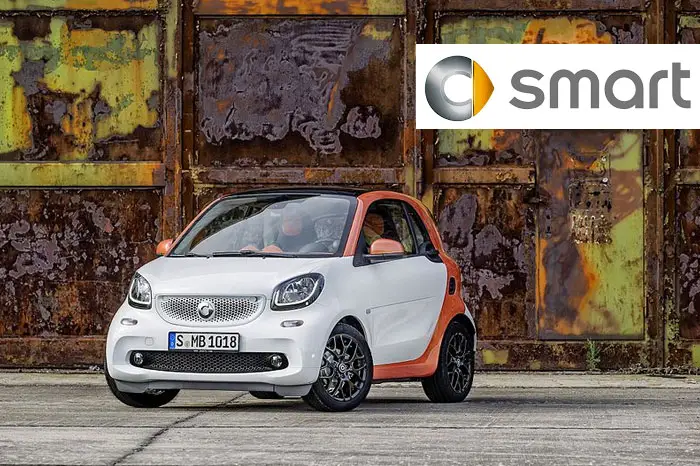
The original idea behind the very short “smart car” is that the vehicle is easy to park. It is short enough to allow it to be parked “nose-in” where a conventionally sized car would have to parallel park. Its length of 2.5m (98.4 in) equals the width of a truck or a regular parking slot, allowing two or three smarts to park in the same space as one normal car if parked side-on to the usual parking direction.
The project idea was originally supported by Swiss watch manufacturer Swatch, and was nicknamed the “Swatchmobile”. The name SMART stands for Swatch Mercedes ART. The car was supposed to use innovative features (such as a hybrid engine) and to be an affordable car for young people. Similar to the objective for the Citroën 2CV in the 1940s, its purpose was to “transport two people and a case of beer”.
Being inexperienced in automobiles, Swatch CEO Nicolas Hayek sought an established car maker to produce his Swatch car, and found a partner in Volkswagen. Plans never reached a final stage so Swatch teamed up with Daimler-Benz. The purpose-built factory complex Smartville in Hambach, Lorraine, France, was established in 1994 as a joint-venture of Daimler-Benz and the Swiss watch manufacturer Swatch.
The final car design proved to be far from Hayek’s expectations: its engine technology was more expensive than many small 4 and 5 seater cars sold in Europe. The joint venture experienced heavy losses and Swatch pulled out.
In 2005, DaimlerChrysler decided against purchasing a 50% share in the Dutch NedCar plant used to manufacture the Forfour supermini. DC also halted development on the Formore and decided to discontinue production of the Roadster.
In 2006, after dwindling sales DaimlerChrysler announced that it would also cancel the Forfour and redesign the Fortwo to debut in Europe in 2007.
An electric, rechargeable version is being released in the UK, by a separate company, as a lease vehicle on a limited basis.

